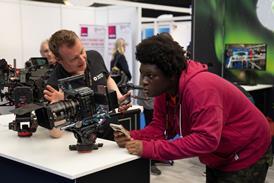The new innovation allows an engineer to monitor wireless cameras and receivers remotely either from a central location or via a mobile phone.
They can check if a camera is operating within the area of RF coverage and if it is tuned to the correct frequency.
It is also possible to turn RF on and off and to change frequency from a remote production office.
Stuart Brown, engineering director at Link Research, believes remote control and monitoring via the GSM network will be particularly useful for managing city centre networks.
“The ability to monitor receiver parameters via a mobile phone will enable the remote user to set up a link completely independently,” he said. “Rental companies can also use the system for remote fault diagnosis as engineers at Link can check units anywhere in the world within the GSM coverage zone.
Link is offering the new remote control facility for Cellular Diversity newsgathering networks in cities and large outdoor sports productions where wireless cameras roam around an area covered by several fixed receivers.
The mobile phone can be a standard GPRS handset which links to the camera control connection on the Link transmitter attached to the camera. A built-in GPS shows where the camera is located so that it can be pinpointed on a map.
Cellular Diversity is the concept of wireless cameras roaming around a wide area covered by a network of several fixed receivers.
A number of cities now have Link's equipment installed, including London, Brussels, Helsinki, Stockholm, Copenhagen, Berlin and Washington.
Cellular Diversity is also used to provide RF coverage for sports such as Motor Racing and Golf tournaments.
Utilising its own video compression and encoding technology to transmit data over fast links, Link Research makes low-delay wireless camera and encoding products for standard and high definition acquisition.




























No comments yet